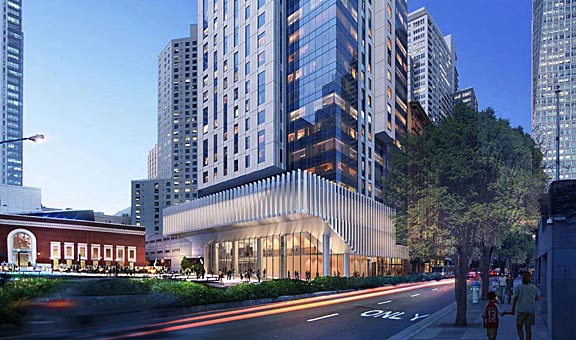The Mexican Museum of San Francisco
I am pleased to announce that I am now a member of the Arts and Letters Council of the Mexican Museum of San Francisco. I was asked to join the council by the museum’s director, David de la Torre, and by accepting the position I have become part of a group of esteemed artists, writers, and scholars who have lent their names in support of the museum and its upcoming expansion.
Too numerous to list, my colleagues on the council come from across the nation and work in various disciplines. Some I have had the honor of meeting and or working with, others I hope to collaborate with in the future. All of us however, are united in promoting The Mexican Museum as it prepares to move into its new state of the art facility in the Yerba Buena Arts District of San Francisco. A groundbreaking celebration marking the start of construction of the brand new museum will take place sometime in 2014, and a grand opening for the new museum is scheduled for 2017.
The Mexican Museum, the only San Francisco museum that is an affiliate of the Smithsonian Institution, holds a growing permanent collection of over 14,000 Pre-Hispanic, Colonial, Popular, Modern and Contemporary Mexican, Latino, and Chicano artworks. It is the largest such collection in the continental United States.

Currently located in the Fort Mason Center of San Francisco’s Mission District, the museum’s new home in the Yerba Buena Arts District will place it near the San Francisco Museum of Modern Art, the Contemporary Jewish Museum, the African Diaspora Museum, the Cartoon Art Museum, and the California Historical Society museum. In the words of David de la Torre, the museum will be a “national center for the serious study of Latino art, history and culture.”
The museum continues to hold exhibits and events at its old Fort Mason Center as it prepares to move in 2017. To give an idea of what one can expect from The Mexican Museum, as of this writing the institution is about to open its latest exhibition, Diálogos Gráficos (Graphic Dialogues). Opening September 13, 2013 and running until April 2014, the exhibit will showcase Mexican and Latino printmaking from the past to the present. Divided into historical and contemporary sections, the show will present hand-made prints by José Guadalupe Posada, David Alfaro Siqueiros, José Clemente Orozco, Leopoldo Méndez, Francisco Mora and Alfredo Zalce. The contemporary section of the exhibit will show prints by Rene Castro, Enrique Chagoya, Juan R. Fuentes, Rupert García, Carmen Lomas Garza and Esther Hernandez.
While many in the U.S. are familiar with Posada, Siqueiros, and Orozco, it is exposure to the works of Méndez, Mora, and Zalce that is essential for an American audience as the three are so unfamiliar in the United States. They all worked in Mexico’s legendary Taller de Gráfica Popular (TGP – “Popular Graphic Arts Workshop”), in fact Méndez and Mora were founding members of the TGP. In my opinion, Méndez (1902-1969) remains Mexico’s most important printmaker, if you want to understand Mexico, view his prints. As for Alfredo Zalce (1908-2003), he was the last of Mexico’s great revolutionary muralists – a contemporary of Rivera and Siqueiros known for his own searing brand of social realism.
The Mexican Museum exhibiting classic Mexican prints in Diálogos Gráficos is significant enough, that it offers a platform for current Chicano and Latino artists – in the same exhibit – is quite extraordinary. It is a blessing to us all that the works of these artists are being shown, and just one out of many reasons why I think this museum promises to be a major institution in our collective future.
I urge readers to spread the word about The Mexican Museum, and consider supporting it by making a donation or becoming a member (which gives you free unlimited admission to all Smithsonian Museums no matter where you are in the United States). If you live in California, you can show your support for the museum by attending the Diálogos Gráficos exhibit… perhaps you will see me there.


